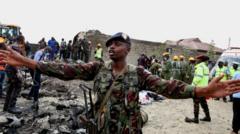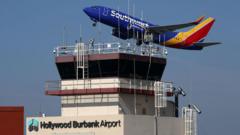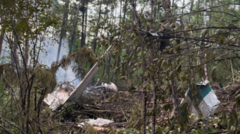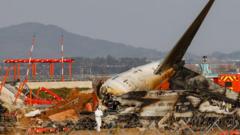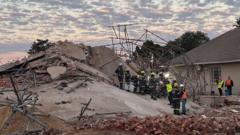The recent crash of Air India Flight 171 has left many unanswered questions in the wake of the preliminary investigation report released by India's Air Accident Investigation Bureau (AAIB). The Boeing 787 Dreamliner tragically crashed into a building shortly after taking off from Ahmedabad, heading for London, resulting in 241 deaths onboard and 19 others on the ground. Only one passenger survived, intensifying the urgency for clarity.
The 15-page preliminary report, published in accordance with international regulations, has not drawn any definitive conclusions regarding the crash's cause. However, it has fueled speculation, particularly surrounding the actions of the flight crew. One key detail from the report indicates that both fuel cut-off switches were shifted from the 'run' to 'cut-off' position mere seconds after takeoff, starving the engines of fuel. Although data shows the pilots did attempt to restart the engines, their efforts were unsuccessful in averting the catastrophe.
Critics of the report have pointed to the lack of a direct transcript from the cockpit voice recorder, which could provide essential context to a reported conversation between the pilots concerning the fuel cut-off switches. This absence, along with selective reporting, has led aviation experts to question the thoroughness and transparency of the investigation.
Voices from the Indian Commercial Pilots' Association have emerged, decrying premature conclusions regarding pilot actions and cautioning against insinuations of potential suicide without verified evidence. The association's warning has been echoed by Air India's CEO, who urged for careful consideration before drawing conclusions about the flight crew's conduct.
Industry insiders have provided a range of opinions, suggesting that the report may omit critical technical information regarding the aircraft's engine status and the specific context of the cockpit dialogue. Some speculate that key information could be intentionally withheld, undermining efforts for clarity.
A past bulletin from the U.S. Federal Aviation Administration (FAA) regarding the fuel cut-off switches has added another layer to the inquiry, as it was suggested that these components may have malfunctioned. However, the FAA later maintained that this issue did not compromise safety.
As investigations continue, the lack of clarity remains disheartening, particularly for the families of the victims seeking closure. The expected timeline for a final report could extend beyond a year, leaving many to hope for answers to the critical questions surrounding this heartbreaking aviation tragedy.







